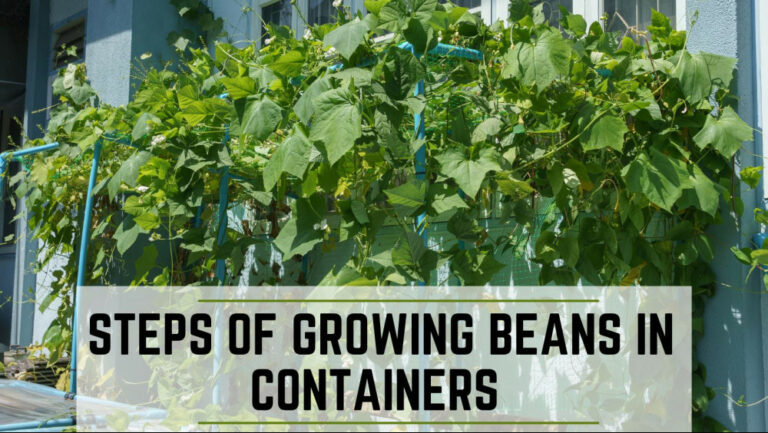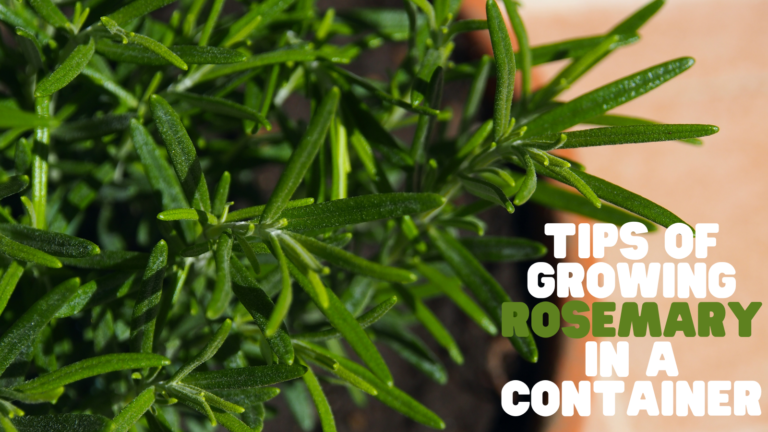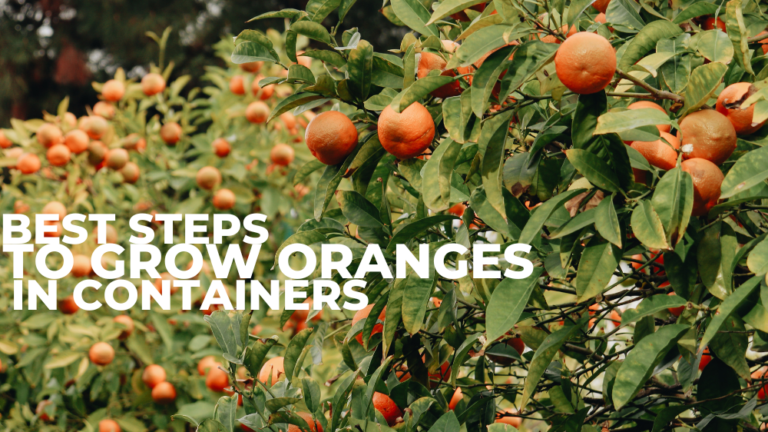9 Easy Steps Of Growing Chamomile In Pots
9 Easy Steps Of Growing Chamomile In Pots
Chamomile is a wonderful therapeutic herb with lovely flowers. But, let's face it, the garden can get a little rowdy at times.
It's one of those plants you start growing only to discover after a few years that it has reseeded and volunteers have sprouted all over the place.
Perhaps you don't have the space to dedicate to an in-ground plot for your favorite herbs, but you want the flavour of fresh chamomile tea from your own garden.
What is the solution? Containers. Growing chamomile in pots helps to keep things under control.
Even if you have a tiny place in the corner of your apartment balcony, you may still enjoy those lovely little white blossoms.
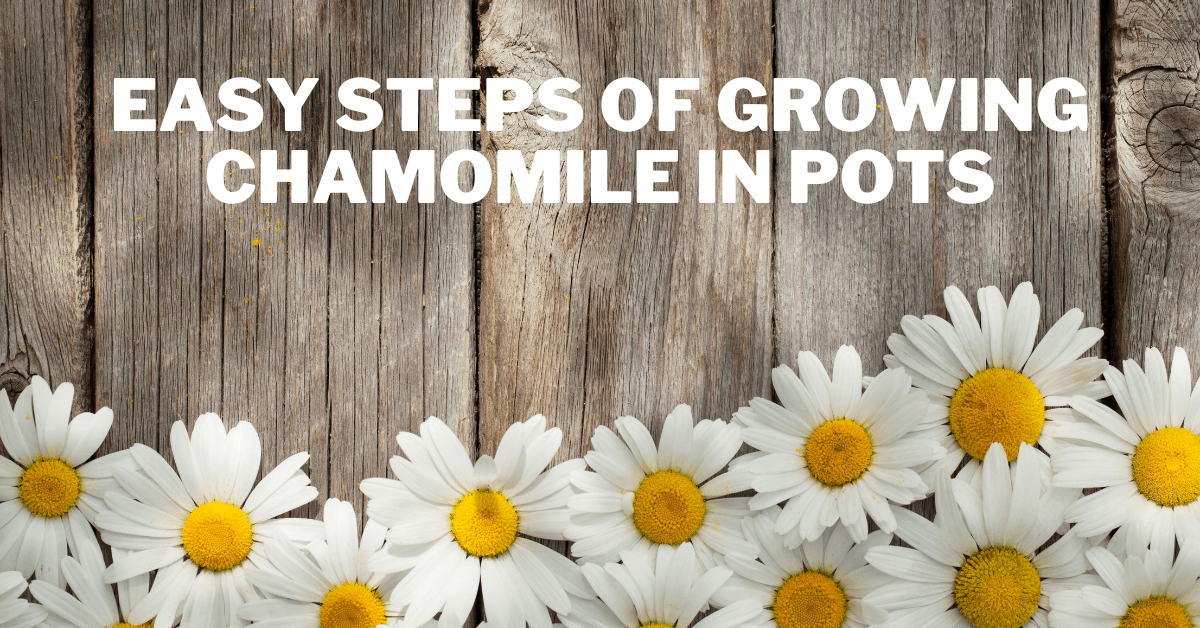
Types Of Chamomile
1. Romana Chamomile
It has a cluster of thick green leaves and is used to cure gastrointestinal ailments and skin inflammation. It is native to Western Europe.
2. German Chamomile
Its oil is utilized for anti-inflammatory and antioxidant effects and is native to Europe, Western Asia, and North America.
3. Egyptian Chamomile
This chamomile is native to Egypt and is thought to be the best! It's canary yellow and has a sweet, floral flavour.
Most evidence for chamomile tea's effect on blood sugar regulation comes from animal research. Nonetheless, the results are encouraging.
Health Benefits Of Chamomile Tea
Chamomile tea is a popular beverage with several health advantages. I’m sharing in detail the sources I have found from (PubMed Central and the National Institutes of Health).
Also, I’ll share some delicious and healthy Chamomile Tea recipes, so continue reading.
Improve Heart Health
Flavones, a type of antioxidant found in chamomile tea, are abundant.
Flavones have been studied for their capacity to decrease blood pressure and cholesterol levels, two important indications of heart disease risk.
Compared to those who drank water, diabetic patients who drank chamomile tea with meals experienced significant improvements in total cholesterol, triglyceride, and “bad” LDL cholesterol levels.
Although further research is needed to confirm the benefit of chamomile tea on heart health, including it in your diet can't hurt.
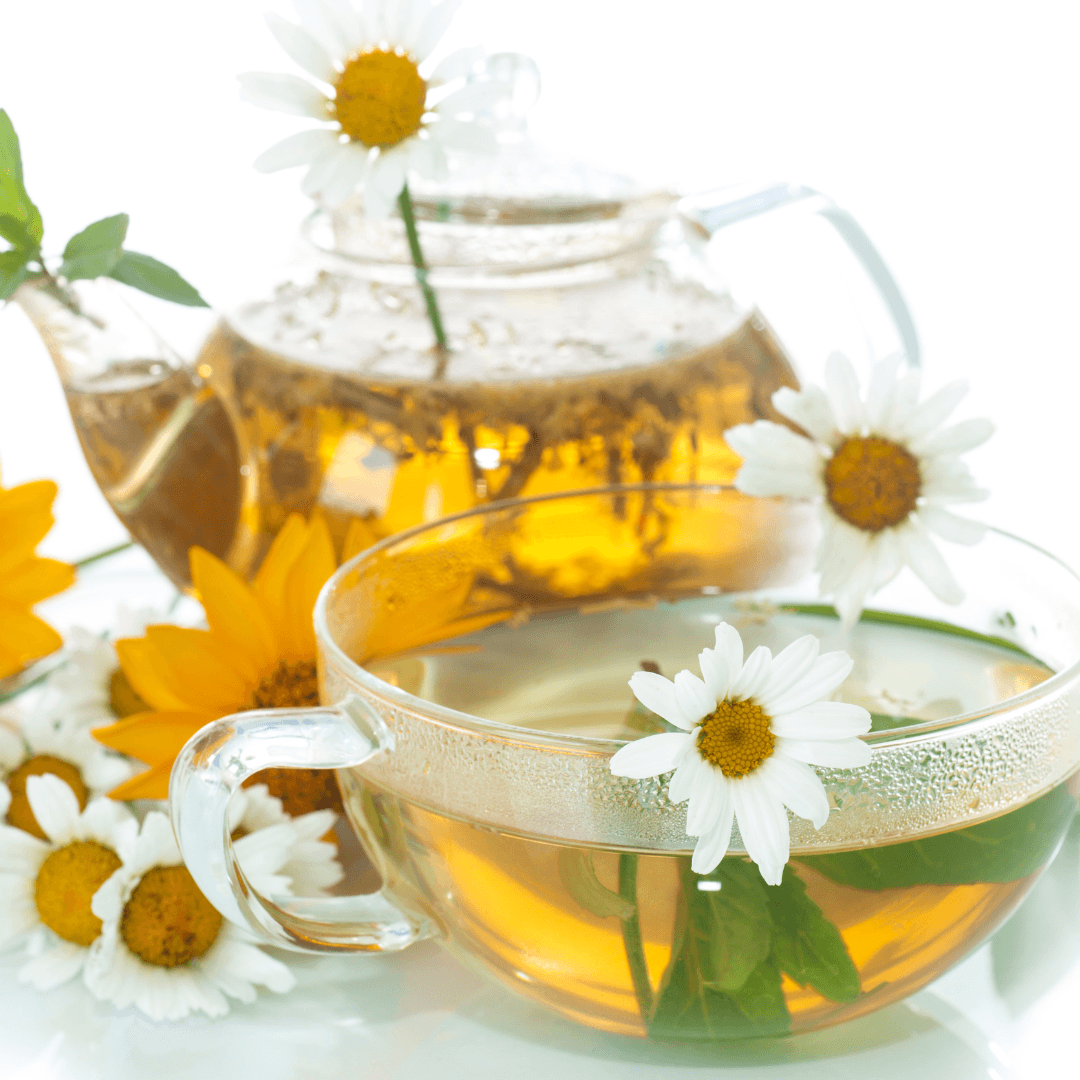
Menstrual Pain Relief
In several studies, chamomile tea has been associated with a reduction in the severity of menstrual cramps.
In a 2010 study, for example, it was discovered that drinking chamomile tea for a month reduced the pain of menstrual cramps.
Period discomfort was also linked to lower levels of anxiety and distress in the women who participated in the study.

Boosts Your Sleep Quality
Chamomile has some special qualities that may help you sleep better.
It contains apigenin, an antioxidant that binds to certain receptors in the brain, increasing sleep and lowering insomnia or the inability to sleep for a long time.
One study found that postpartum women who drank chamomile tea for two weeks slept better than those who did not.
They also showed fewer signs of depression, frequently connected to sleep issues.
Another study discovered that those who took 270 mg of chamomile extract twice daily for 28 days awoke ⅓ less at night and fell asleep 15 minutes faster than those who did not.
These findings are encouraging, but further research is needed to discover the full extent of the sleep benefits of chamomile tea.
If you have difficulties falling or staying asleep, though, sipping chamomile tea before bed is well worth a try.
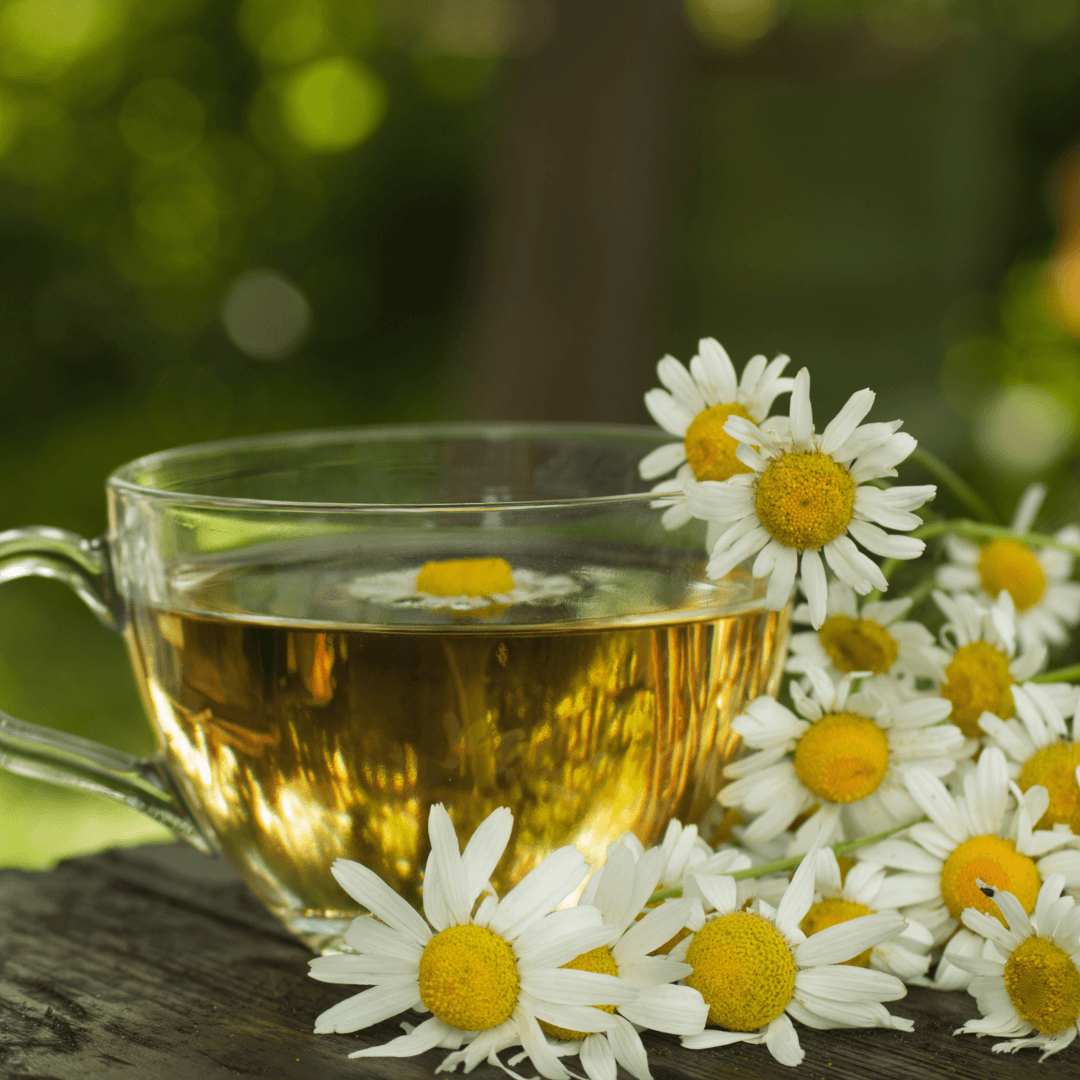
Defends Against Specific Types Of Cancer
Chamomile tea contains antioxidants linked to a lower risk of some cancers. Apigenin is an antioxidant found in chamomile.
Apigenin has been demonstrated to destroy cancer cells in test tubes, particularly those from the breast, digestive tract, skin, prostate, and uterus.
Furthermore, a study of 537 persons found that those who drank chamomile tea 2–6 times per week were considerably less likely to acquire thyroid cancer than those who did not.
These findings are encouraging, but further high-quality human research is needed before a conclusion about chamomile tea's cancer-prevention potential can be drawn.
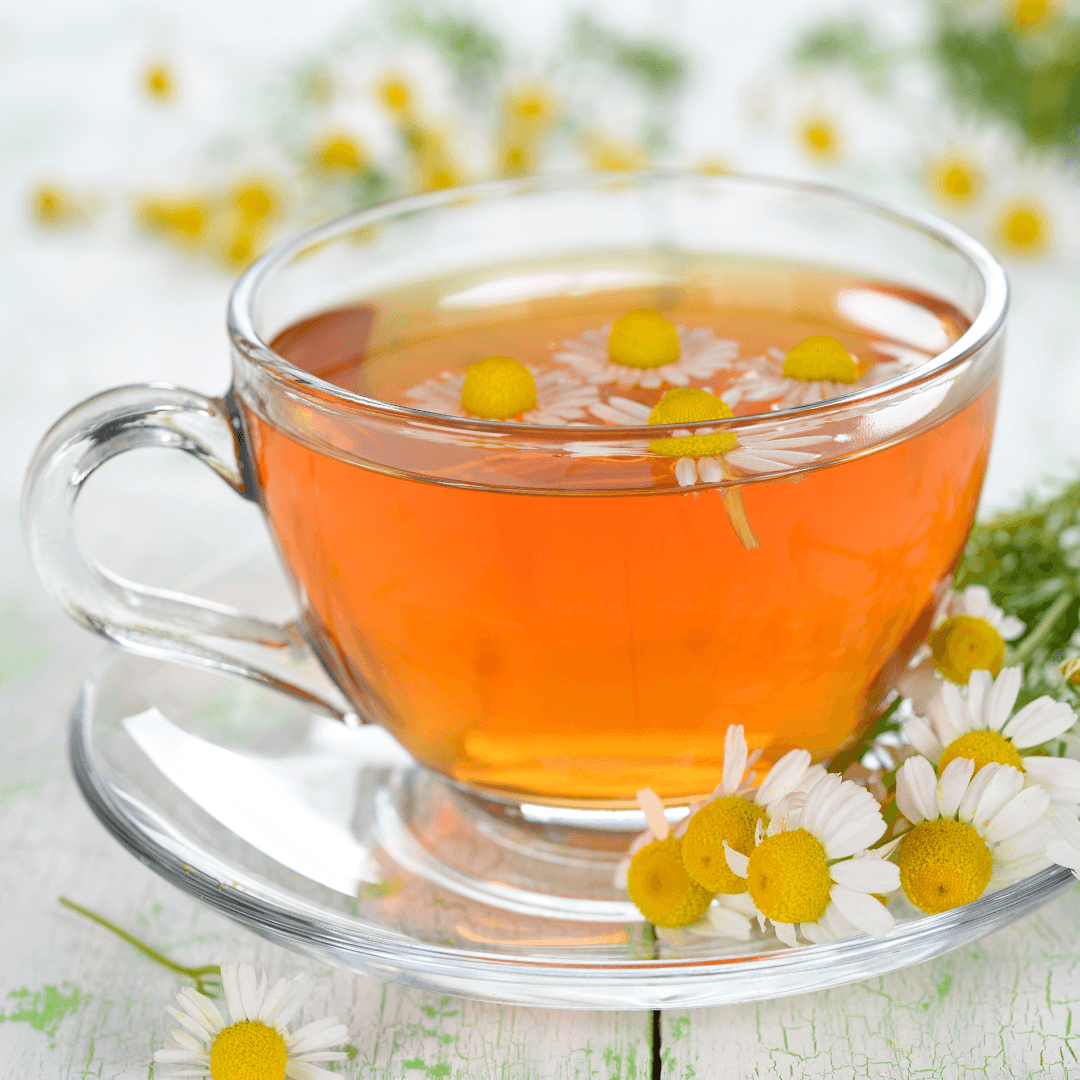
Helps To Control Blood Sugar
Chamomile tea has been shown to help reduce blood sugar levels.
Its anti-inflammatory characteristics may protect the cells of your pancreas from damage caused by chronically high blood sugar levels.
Because it generates insulin, the hormone responsible for eliminating sugar from your blood, the health of your pancreas is important.
Those who drank chamomile tea daily with meals for eight weeks had significantly lower average blood sugar levels than those who drank water, according to a study of 64 diabetics.
In addition, some animal studies suggest that chamomile tea can help prevent blood sugar increases after eating by lowering fasting blood sugar levels by a significant amount.
Growing Chamomile In Pots
Now, I’ll share the easy steps to help you grow chamomile in pots.
Step 1: Choose The Perfect Container
When it comes to growing chamomile, just about any container will suffice if it is large enough and has sufficient drainage.
- Paint cans, an old chicken feeder, an antique sink, and drawers from a broken dresser can all be used.
- If you plan to eat, be sure it's sturdy enough to avoid being pushed over and contains no potentially dangerous chemicals.
- For example, anything covered in paint before the late 1970s could contain lead.
- Classic terra cotta, clay, or plastic potting pots are always available. Make sure the pot has at least a one-quarter-inch drainage hole every two to three inches on the bottom, whichever you use. Chamomile can withstand some drought, but damp feet will make it die.
- Remember that if you use cement or terra cotta and plan to move the container indoors and out, it may crack due to temperature variations. A better option might be resin or plastic.
- When it comes to size, your chamomile should not be overcrowded. It has shallow roots, yet it needs room to grow.
- Your German chamomile plant requires a container that is 12 inches wide and 8 inches deep.
- Remember that the plant can reach a height of 24 inches when fully grown, so the pot should be strong enough to support it and prevent it from tipping over.
- Choose a pot at least 18 inches wide if you wish to grow it with a companion plant like basil.
- Roman chamomile requires a container 18-24 inches wide and 8 inches deep to spread out.
Step 2: Soil Requirements
A well-draining soil is required. Because sandy-loamy soil drains efficiently, it is a good choice.
When it comes to growing, chamomile doesn't have a lot of requirements. It can thrive in poor soil, but it's best to add aged compost if it lacks nutrients.
Step 3: Propagation
Chamomile seeds can be purchased from a nursery or garden center and sown directly into the pots.
It takes approximately a week or two for the seeds to germinate. Plant them 6-8 weeks before the latest projected frost date indoors or anytime outdoors after all frost dangers have gone in the spring to get a head start.
Chamomile can be grown from cuttings as well. Take a 4-5 inch clipping from a healthy plant and remove the lower half of the leaves.
Plant it in a pot after dipping it in rooting hormone. Keep the soil moist; the cutting will take 5-6 weeks to grow roots.

Step 4: Position
Chamomile attracts useful insects, including bees, butterflies, hoverflies, and parasitic wasps, so place your pots near your herb or veggie garden or other potted edible plants that need pollination.
It also likes to keep cool, and plants in containers get warmer in hot weather than plants in the ground.
If you live in a hot environment, place your pots in an area where they will be somewhat shaded during the day, or prepare to relocate them as needed. Those who live in cooler climates can grow in full sun.
Avoid placing potted chamomile near a brick wall or where the heat will be magnified. During the hottest days, transfer your container to a shadier, cooler location if temperatures in your area exceed 100°F.
Bring the plants indoors to keep the harvest going once the weather turns chilly. It's important to remember that the German variety is an annual, but the Roman variety is a perennial.
Both plants are only able to resist a little cold for a short period of time.
Step 5: Watering
Chamomile may survive minor dry conditions once it has established itself. But don't play with fate. Those tiny roots immediately dry out.
Watering regularly encourages blossoms and keeps the roots happy and healthy, so give it at least 1 inch of water per week. Between waterings, allow the soil to dry out.
Stick your finger in the soil to check moisture levels… water when the top 12 inches are dry.
A little mulch can aid plants like chamomile that need moderate moistening. Even a thin coating of dried leaves or wood chips can assist in managing moisture levels (keep the mulch away from the stems).
Step 6: Temperature
Chamomile can grow in any summer temperature below 100 degrees Fahrenheit. It prefers a comfortable temperature of 60 to 68° Fahrenheit. It thrives in very humid settings since it is drought-tolerant.
Step 7: Fertilizing
Chamomile does not require a lot of fertilizer. Remember that it's a perennial (or, in the case of German chamomile, a self-seeding annual) that grows and spreads readily in the wild, even under less-than-ideal conditions.
On the other hand, some container plants require a little extra attention because they have a smaller supply of nutrients.
All that is required is a modest monthly application of old compost, diluted fish emulsion, or all-purpose plant food.
On that topic, over-fertilizing chamomile can be harmful. It can turn bitter and concentrate its growth on the leaves rather than the flowers. So go easy on the fertilizer, or don't use any.
Step 8: Harvesting
Chamomile blooms 8-10 weeks after planting, usually between June and September. Harvest only the flower heads when the blooms open before the petals droop. Before using, remove the stems and leaves.
Area in a cool, dark place to dry. The dried flowers can be kept in a glass jar or container until ready to use or frozen.
Step 9: Storage And Drying
Keep your produce in a dimly lit area. Allow the flowers to dry by spreading them out on a level surface. You might use a dehydrator or a tiny fan to speed up the process.
Keep the flowers in an airtight glass jar once they've dried. Always keep the jar away from direct heat and light.
Chamomile's Most Common Issues
Chamomile is a simple herb to cultivate inside and out, with few issues. It does, however, require some TLC from time to time.
1. Leaves With Brown Spots
This is a symptom of various fungal plant diseases, including botrytis blight. It can be fixed by applying fungicidal oil to your plant.
2. Browning And Falling Leaves
Your chamomile may be getting too much water if this happens to it. Reduce the water you use to see whether it makes a difference.
Pests & Diseases Of Chamomile
The good news is that it is pest and disease-resistant, except for a few typical pest concerns.
Still, keep an eye out for aphids and mealybugs, and if you find them, a strong spray of water or a block of insecticidal soap can do the trick. A neem oil solution is also beneficial.
Chamomile Tea Recipes
1. Fresh Flower Chamomile Tea
Ingredients
- Boiling water: 8 oz
- Fresh chamomile flowers: 1 handful (increase petal amounts for stronger tea)
- Apple mint: 2 leaves
Method
- Remove the entire flower head off the stem to harvest the fresh blossoms. Clean the chamomile flowers by rinsing them in warm water and patting them dry. Freshly gathered chamomile flowers are the finest for making chamomile tea.
- Flowers can be stored in the refrigerator for 48 hours if necessary. Place the petals in an airtight container after wrapping them in a damp paper towel.
- Bring a tea kettle or a large pot of water to a boil on the stove. Because they feature built-in systems to keep the petals separated, infusion tea kettles are the finest solution for fresh flower teas.
- You can use another infusion method, such as a tea ball or cheesecloth, as a substitute for a teabag. To retain the taste of your tea, always use pure or spring water rather than boiling tap water when brewing it.
- Place flower petals in an infuser and steep the tea for 5 minutes in a kettle or pot. Before pouring into a teacup, remove the flower petals and optional mint leaves. Enjoy!
2. Lavender Chamomile Tea
Ingredients
- Fresh chamomile flowers: ½ cup
- Fresh lavender flowers: ½ cup
- Apple mint leaves: ½ cup
- Whole lemons juiced: 2
- Honey or maple syrup: ¼ cup
Method
- To boil water, use a kettle or a large pot. Infuse chamomile, lavender, and mint leaves in a tea ball of boiling water and let it steep for 5-10 minutes.
- Remove the tea ball or sift the loose blossoms and leaves through a fine mesh screen.
- Toss hot tea with lemon juice and honey. Serve right away.
3. Chamomile Cinnamon Tea
Ingredients
- Spring or pure water: 8 oz
- Milk (dairy or plant-based): 8 oz
- Fresh chamomile flowers: 1 handful
- Maple syrup: 1 tablespoon
- Ground cinnamon: ½ teaspoon
Method
- In a medium saucepan, bring the water to a fast boil.
- Take the pan off the heat and add the chamomile flowers. 5 minutes of steeping
- Combine the maple syrup and cinnamon in a small bowl.
- Warm the milk and froth it. Using a milk frother on an espresso machine or a hand frother is the easiest way. Whisk the milk quickly in a separate saucepan if you don't have one. Continue whisking until little bubbles appear, and the milk foams up.
- In a cup, combine the water infusion and milk. Topping the mug with a dollop of milk foam is a nice touch. Enjoy with a pinch of cinnamon!
4. Chamomile Ginger Iced Tea
Ingredients
- Water: 8 cups
- Fresh ginger: 1 2-inch piece
- Fresh chamomile flowers: 2 cups
- Honey: 4 tablespoons
- Lemon juice: 2 lemons freshly squeezed
- Ice
Method
- Bring water to a quick boil in a medium saucepan. Remove from the heat and set aside to cool for 1 minute.
- Combine the ginger, chamomile flowers, honey, and lemons in a large mixing bowl. Steep for one hour or until the pan reaches room temperature.
- Using a fine-mesh strainer, pour the tea into a large glass pitcher. Refrigerate for 3 hours before serving.
- Pour into large glasses filled with ice cubes and serve immediately. If desired, garnish with a lemon slice and a fresh chamomile flower.
5. Chamomile Hot Toddy Tea
Ingredients
- Water: ½ cup
- Fresh chamomile flowers: 2 tablespoons
- Dark alcohol (whiskey, bourbon, or brandy work best): 2 tablespoons (don't use if children drink this tea)
- Lemon juice: ½ lemon
- Honey or maple syrup: 1 tablespoon
Method
- In a mug, combine the liquor, lemon juice, and honey. Mix thoroughly.
- Heat the water in a small saucepan till boiling. Remove the pan from the heat and add the chamomile flowers. 5 minutes of steeping
- Using a fine-mesh strainer, strain the chamomile flowers and pour the hot infusion into the mug with the honey and alcohol.
- Enjoy with a lemon slice or a cinnamon stick as a garnish.
Conclusion
Hope you’ll add the flower to your home garden. Feel free to comment here if you face any issues or need help growing chamomile in pots.
I trust you enjoyed this article on the 9 Easy Steps Of Growing Chamomile In Pots. Please stay tuned for more blog posts to come shortly. Take care!
JeannetteZ
>>>Please click here to read my all-inclusive article about Container Gardening<<<
Are you interested in homegrown herbs and medicine? Please click here to find out more about it!
Your Opinion Is Important To Me
Thoughts? Ideas? Questions? I would love to hear from you. Please leave me your questions, experiences, and remarks about this article on the 9 Easy Steps of Growing Chamomile In Pots in the comments section below. You can also reach me by email at Jeannette@Close-To-Nature.org.
Disclosure
This post may contain affiliate links. I earn from qualifying purchases as an Amazon Associate and other affiliate programs. Please read my full affiliate disclosure.
You might also enjoy these blog posts:
Steps Of Growing Calla Lilies In Containers
11 Steps Of Growing Apples In Containers
10 Easy Steps Of Growing Raspberries In Containers
Natural Remedies For Everyday Illnesses
Pet Birds That Live A Long Time















